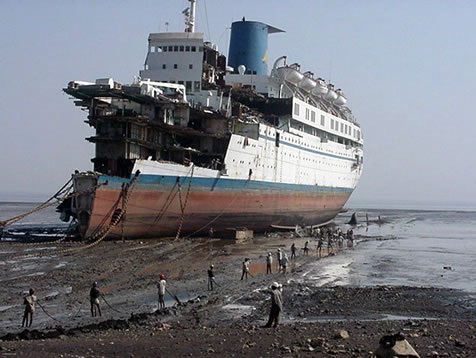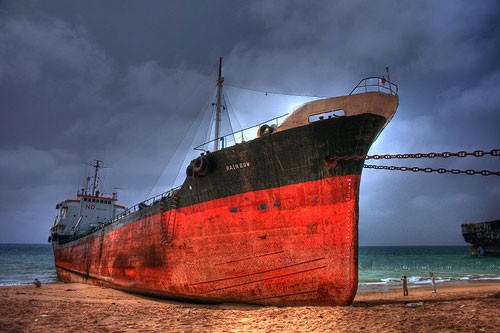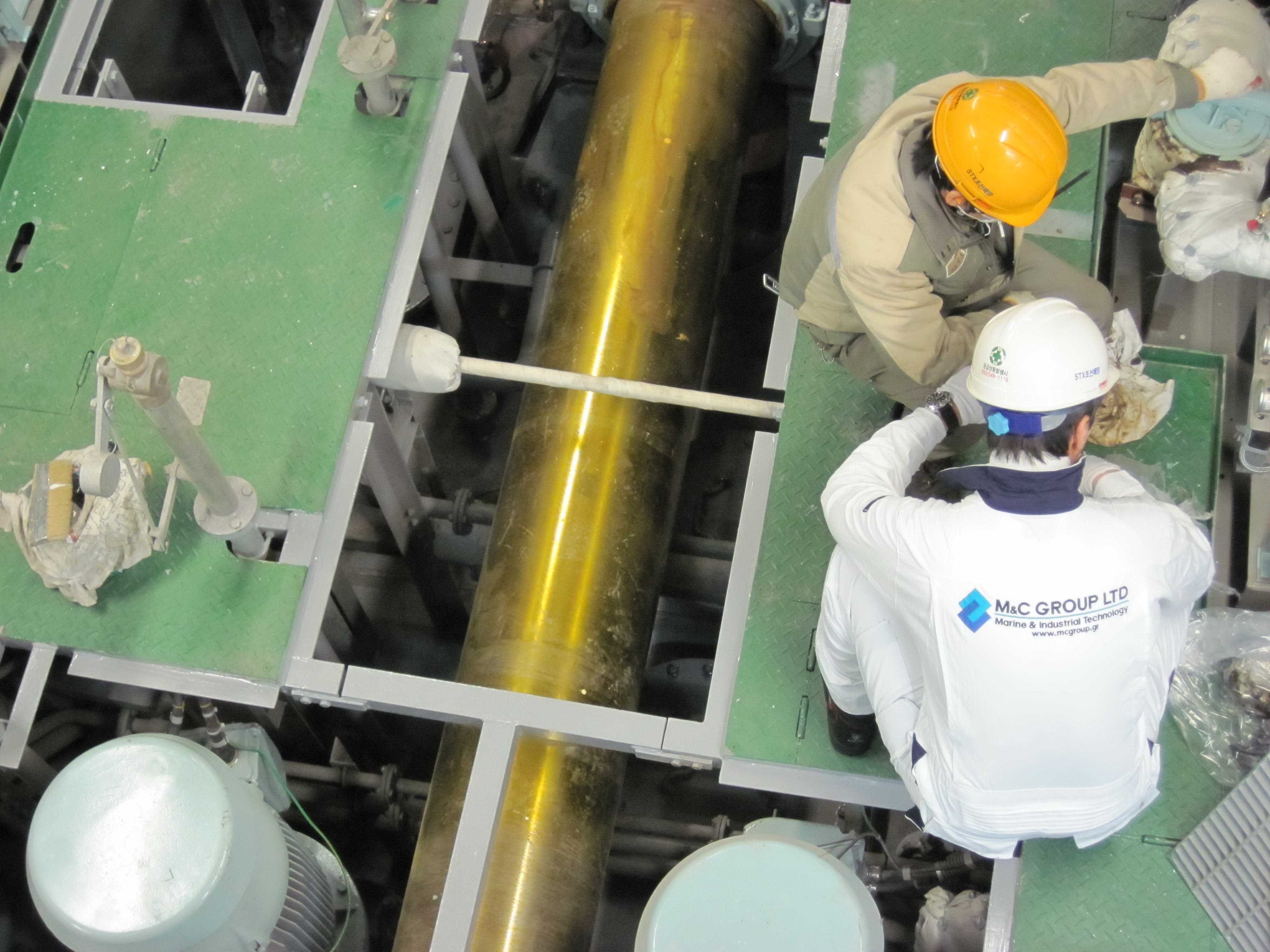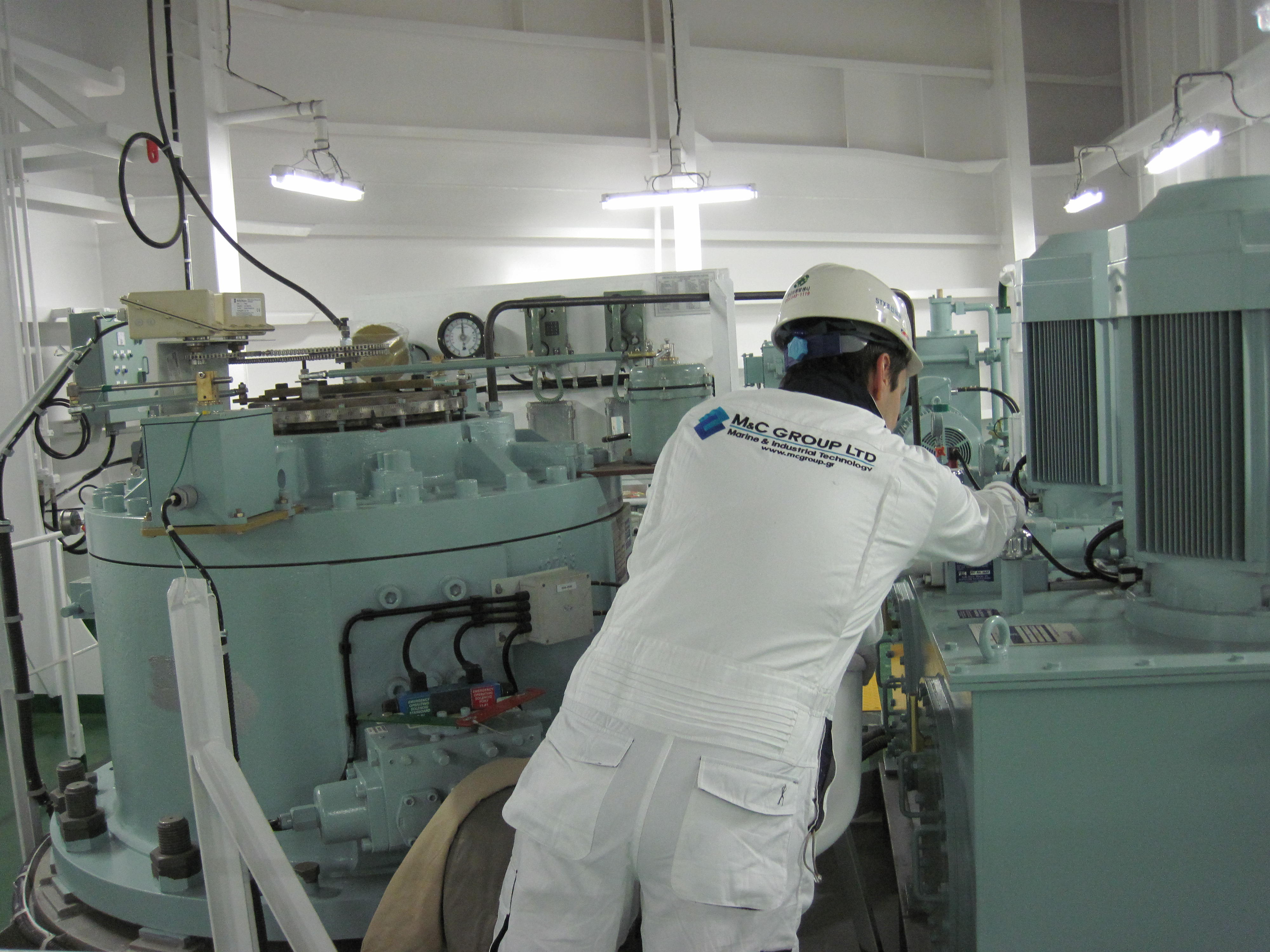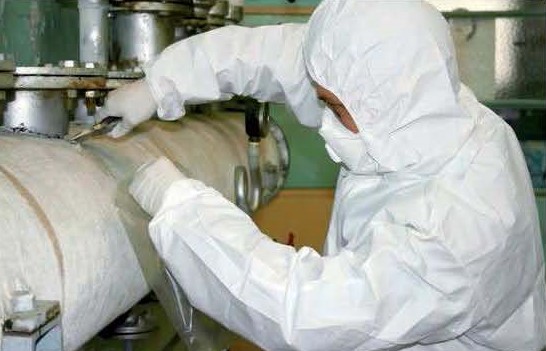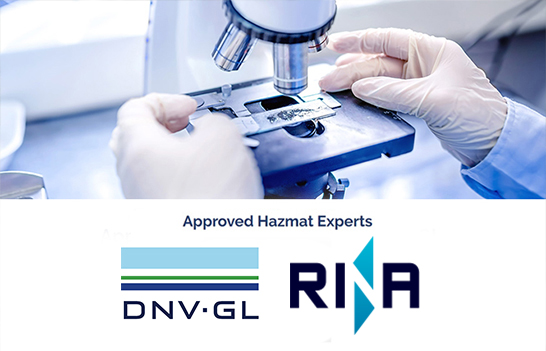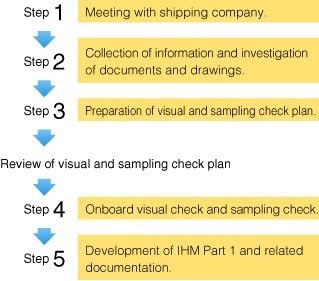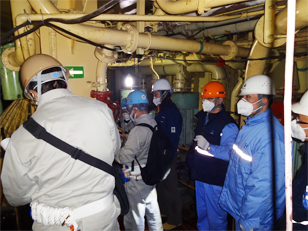As a subset of media ethics, ‘journalistic ethics’ is comprised of principals of ethics and good practice that apply to journalists across various types of news mediums. Codes may vary from one organization to another, however, most share common themes of adherence to accuracy, objectivity, impartiality, and fairness in their efforts to maintain unbiased views and provide newsworthy information to the public. For many, the British Broadcasting Corporation (BBC) is looked to in order to provide its readers with unbiased, accurate, and truthful reporting in accordance with these principals.
It would appear as though the journalistic code of ethics was not closely practiced during the BBC’s recent ‘report’ titled, “Breaking Bad: Uncovering the Oil Industry’s Dirty Secret.” Throughout the coverage, the BBC feeds readers inaccuracies and negatively spun out-of-context views on ship recycling yards in Alang, India.
Following the onslaught of misinformation and incorrect views of the ship recycling industry portrayed by the BBC, our principals have found it necessary to address some falsified items and misleading perspectives depicted in the report.
A GRAVEYARD OF SHIPS:
The article bears several intentionally misleading sub-headlines such as “Constant Danger” & “Toxic Hotspot” when referring to Alang as “a graveyard of ships.”
This glaringly intentional misdirection by the article betrays the reality on the ground in Alang, India, where nearly 80 ship recycling yards (out of 120) have achieved over 105 Hong Kong Convention SoC (Statement of Compliance) certifications, including multiple certifications by single yards from various IACS class societies – including ClassNK, IR Class, Lloyd’s Register, and RINA.
The reporters have chosen to place at center stage, the opinions of NGOs and other biased stakeholders that have vested interests in bolstering negative agendas against the ship recycling industry in Alang. Yet the article fails to include a single interview from any individual or organization who would present a counterpoint to dispute the negative claims made in the report. GMS had chosen to provide formal written responses to questions raised by the BBC, most of which do not seem to have been taken into account.
Perhaps most concerning is the journalist’s failure to acknowledge the findings of reputable classification societies that have independently visited, vetted, and verified the operations, codes of conduct, and worker & environmental safety standards and procedures that are currently in place at most yards in Alang. These class societies have placed their reputations on the line by issuing SoC certificates to recycling yards in Alang. It is these SoC certificates that have become one of the fundamental building blocks in the decision-making process of blue-chip ship owners to responsibly select which yards will become the final resting place for their assets.
BIASED INTERVIEWEES:
It is important to understand that over 1,000 foreign nationals have visited Alang over the last five years alone. The vast majority of these visitors have been “auditors” (e.g., class auditors, ship owners, owner’s reps, brokers, capital providers, diplomats, bureaucrats, policymakers, NGOs, underwriters, marine surveyors, scientists, naval architects, engineers, students, etc.). The focus of these auditors is generally to: (1) determine if the negative stories they have seen about Alang are real, and (2) to decide if they believe that Alang can recycle ships in a safe and environmentally sound manner per international guidelines.
After reading the report, it is obvious how many of these 1,000+ visitors and auditors were interviewed in order to voice their opinions. It would appear that these people were left out of the report intentionally. Out of the people interviewed, the report fails to convey how many have ever been to Alang themselves, and if they have ever visited, how recently they have been there in order to give their statements and views legitimacy.
In addition, out of over 100,000+ industry workers, only two obviously disgruntled and biased brothers who are yard laborers were interviewed and referenced in the report. It is impossible to obtain a fair and balanced view of the yard worker’s perspective from only two employees.
In an attempt to validate what would appear to be preconceived biases against the industry, the BBC chose to interview Ms. Ingvild Jenssen (founder and director of the NGO Shipbreaking Platform) who has unrelentingly targeted the ship recycling sector. Throughout the years, Ms. Jenssen has used the platform’s position to spread inaccuracies and misrepresentation of facts in an effort to invalidate the hard work and improvements made by an industry that has earned a reputation as a reliable source for safe and environmentally conscious ship recycling.
Adding to the list of suspects or potentially biased sources, the BBC also chose to rely on the opinions of an attorney from a law firm that specialises in human rights cases when it came to seeking information about Ship Recycling. The attorney seemed to give his opinion about the business of Cash Buying and the Ship Recycling industry at large, offering his views on some practices without appearing to adequately understand or articulat the correct inner workings and structures of the industry. In general, people who lack the basic understanding of the reasons for why the shipping industry employs flags of convenience (FoCs) or specific corporate structures should not be relied on for their professional opinions about the space.
The BBC seems determined to link the ownership of the rigs in Scotland to GMS via the following statements: “Throughout its dealings with Sepa and the BBC, GMS denied it was the owner of any of the vessels it bought from Diamond Offshore – insisting it was only acting as an agent for other, unnamed companies.”
What the BBC or its interviewees failed to highlight is that Cash Buyers generally act as “agents” on behalf of principals and have no legal relationship to the ownership of assets.
FATALITIES AND MEDICINAL HELP:
The article goes on to quote Ms. Jenssen, claiming that over 137 lives have been lost between 2009 and 2019.
While any death is tragic, we are pleased to advise that in the history of the GMS Responsible Ship Recycling Program (RSRP), not a single vessel negotiated by GMS under this program has suffered a fatality.
Data collected from official sources would indicate that, sadly, 63 deaths were reported in Alang between 2014 – 2019. This would mean roughly 10.5 deaths per annum. It is estimated that 100,000+ total people work in the ship recycling industry in Alang (including those who work in the actual yards and downstream ship recycling-related jobs in Alang). According to the Gujarat Maritime Board, with all direct and indirect related jobs, this figure could be as high as 500,000 ancillary jobs being related to the industry.
While the goal is to bring this fatality number down to ZERO, last month (Feb 2020), Business Insider published an article using info from the US Bureau of Labor Statistics (2018 data), that looks at the number of deaths per 100,000 people in an industry.
According to this data, in the United States, logging is the most dangerous job with 97.6 deaths per 100,000 workers, followed closely by fishing (and fishing-related workers) at 77.4 deaths per 100,000, and coming in third are aircraft pilots and flight engineers who had 58.9 deaths per 100,000 workers. The list of deadly jobs in the USA is extensive, and as you go down the line, refuse and recyclable material collectors (i.e., garbage men) have 44.3 deaths per 100,000. In comparison, truck drivers and sales workers are 26 deaths per 100,000, farmers and ranchers are 24.7 per 100,000, and structural iron and steel workers are 23.6 deaths per 100,000. Regular construction laborers in the USA have a fatality rate of 13 per 100,000 (this is only # 17 most dangerous on the list), and operating engineers and other construction equipment operators (#20 on the USA most dangerous jobs list) have a fatality rate of 10.6 per 100,000 workers. Professional athletes come in at #24 on the list with 7.6 per 100,000 while taxi cab drivers and chauffeurs are #26 with 6.7 per 100,000 – the list goes on.
These statistics are not being mentioned to minimalize the danger of any jobs or to downplay the tragedy of even one death or injury, but rather to put into perspective the risks and hazards that are felt across all industries throughout the world.
Finally, perhaps the most egregious misrepresentation in the article states that there “is only one small clinic in Alang and more seriously injured workers have to travel to the city hospital in Bhavnagar – a 30-mile journey on unpaved roads which takes more than an hour.”
A simple search on Google will list three hospitals in Alang that are currently operational 24 hours a day. Those facilities include:
- Alang Hospital, located at South Side Road, Alang, Gujarat 364150, India.
- GMB Multispeciality Hospital Alang, located at South Side Road-Alang, Alang, Gujarat 364150, India.
- Redcross Hospital of Alang, located: Near Mahadev Temple, South Side Road-Alang, Alang, Gujarat, 364150, India.
THE POWER OF MISDIRECTION AND IMPORTANCE OF FACTS:
The editors of the article use hyperbole to over-inflate claims such as “Documents filed by GMS show significant amounts of waste aboard all three vessels, including the poisonous heavy metals cadmium and mercury,” Other examples include “The Ocean Princess alone contains an estimated 428 tonnes of waste, including about a tonne of asbestos” and “An inventory for the Ocean Vanguard lists PCB, a highly toxic chemical which was used as an electrical coolant and insulator until its production was banned worldwide”.
In reality, mercury was only found in thermometers and lighting fixtures, while cadmium and lead were found in batteries on-board. These are materials that can be routinely found in everyday household items (albeit in smaller quantities), let alone ocean-going vessels or a 15,000-ton rig.
Moreover, the Inventory of Hazardous Materials (IHMs) prepared by Lloyd’s approved specialists confirm that only 6.3 tons of waste were on board the Ocean Princess, including the aforementioned thermometers and lighting fixtures.
The IHM of the Ocean Vanguard (in fact, on all three rigs) confirms that none of the three rigs have any PCBs on board and samples tested from various areas of the rigs for the presence of PCBs, all tested negative.
THE POSITIVE REALITY OF RECYCLING IN INDIA
To encourage the positive growth of India’s vital ship recycling sector, the Government of India acceded to the Hong Kong Convention for Safe and Environmentally Sound Recycling of Ships, and became the only South Asian country and major ship recycling destination to take such a positive step.
Moreover, major blue-chip and stock listed ship owners of the world including but not limited to American, European, and Asian based ship owners have spent significant amounts of time and money in an effort to conduct proper due diligence in the yards and have subsequently decided to recycle their end-of-life tonnage at recycling facilities in Alang.
Twenty ship recycling yards have filed applications with the European Commission for the audit of their recycling facilities for inclusion in the EU’s list of approved ship recycling yards, and several of these yards are currently undergoing full EU-audits. These efforts demonstrate the amount of work that has gone into improving the yards and shows that they pass at least the preliminary measures to be considered for possible inclusion under the EU Ship Recycling Regulation (EUSRR) – a fact conveniently omitted by the BBC.
Ship recycling yard owners have made massive investments into upgrading their recycling facilities and safety infrastructure, starting with small yet essential items such as routine use of safety gear, masks, gloves, hard hats, and boots, to significant improvements including 100% impervious floors with drainage systems, heavy lift cranes, yard and vessel-specific training for workers and Ship Recycling Facility Plan(s) as per MEPC 210 (63) and Ship-Specific Recycling Plans as per MEPC 196 (62).
Over the years, the Gujarat Maritime Board (GMB), in association with Ship Recycling Industries Association (SRIA), has implemented many developmental programmes at Alang, such as:
- The GMB developed a Safety Training and Labour Welfare Institute at Alang in 2003. This is a 12-day mandatory training programme for fresh workers joining the industry, followed by an oral/written examination conducted by IR Class (an IACS member). Only successful candidates are eligible for employment in the yards. Over 140,000 workers have been trained to date in the Safety Training and Labour Welfare Institute at Alang. Several refresher trainings are conducted on an ongoing basis, for previously trained and certified workers.
- As stated above, three hospitals are currently in operation at Alang, including one that is operated by the Indian Red Cross Society and financially supported by the GMB. There are two full-time ambulances in service and an additional 10 ambulances that are privately owned by yards in an effort to comply with EUSRR requirements. A multi-specialty hospital and a mobile hospital with a certified doctor is also in operation by the Ship Recycling Association. In addition, a full-fledged hospital with 30 beds was constructed by the GMB and will be operational shortly by ESIC. About 15,000 labourers are currently registered with ESIC and have been provided with a smart card.
- In association with the SRIA, the GMB developed a Labour colony in order to provide residences for local labourers. Phase-I of this colony has been constructed for 1008 labours working at local yards. Along with addressing basic requirements, such as water supply, sanitation, electrification, etc., supplemental facilities such as canteens, offices, and local shops are also provided. Finally, as per ILO standards at Alang, several recycling yard owners have themselves constructed labour colonies for their own workers, which also accommodate nearly 800 yard employees.
- Firefighting arrangements for local yards are under the supervision of the GMB. The fire fighting force is headed by a fire officer and operational staff, which includes one Station Officer, two Pump Operators / Drivers, two Junior Officers, and thirteen supporting firemen.
- To support local yards, an HGL Sump of 2.5 million litres has been constructed at Trapaj Head-works, to draw water from the Mahi-Pariej line and directed to Alang & Sosiya yards. In addition, separate storage and internal distribution systems have been developed for a water supply network for ship breaking plots in both areas:
In Alang: an overhead tank with 1.2 Million litres and underground sump with over 1 Million litres.
In Sosiya: an overhead tank with 700K litres and an underground sump with 600K litres.
The ship recycling yards in Alang serve the nation by producing about 4.5 million tons of re-rollable steel per year, without exploiting any natural resources. The labour wages are as per standards set by the Government, and several yards have invested in jetties and heavy cranes in order to directly lift steel and other heavy items from vessels, without touching the inter-tidal zone and subsequently placing them on the impervious cutting floor of the recycling yard.
In the near future, the world’s largest stretch of ship-breaking beaches at Alang-Sosiya, in Gujarat’s Bhavnagar district, will be upgraded through a $76 million loan from the Japan International Cooperation Agency (JICA). The loan will be used to further upgrade 70 recycling yards over the next few years.
Many yards are already upgraded, and these improvements will introduce increased environmentally sound and safer ship recycling practices to even more yards and will help enable additional ship recyclers to adopt processes in accordance with international practices. The project will conduct additional capacity development training courses for stakeholders at various levels. The training courses will continue to cover key aspects of recycling, including safety and environmental protection.
ABOUT HARIYANA RECYCLING YARD AND THE RECYCLING OF “LANCE”
LANCE (Ex-OCEAN ALLIANCE) was recycled at Hariyana Ship Demolition Pvt. Ltd., (Plot # V4) in Alang. With over three decades of experience, the Hariyana Group is known for its legacy of high standards in the Ship Recycling industry throughout Asia. Hariyana Ship Breakers Ltd is a close client of GMS and is listed on India’s leading financial exchange, i.e., the Bombay Stock Exchange (BSE), as the only listed and dividend-paying company in the industry for over eight years.
Throughout their years of working together, GMS and the Hariyana Group have demonstrated their commitment towards worker safety and to the environment as dominant players through maintaining excellent track records for worker safety and environmental protection, while abiding by the most stringent national and international protocols.
Hariyana Ship Demolition Pvt. Ltd., is a member of the Treatment Storage Disposal Facility (TSDF) site at Alang and has a HKC statement of compliance from RINA Class and is currently working for a HKC SOC from ClassNK.
Please see below a few photos that were captured in the yard during the roughly the same time that the BBC was visiting Alang. Regrettably, selective and out of context pictures were used by the BBC in their report.

Here are some FACTS to help foster an understanding of the real situation surrounding the recycling of “LANCE” (EX OCEAN ALLIANCE).
The vessel received beaching permission on December 8, 2018, and cutting permission was granted by the authorized regulatory body on February 19, 2019. The vessel was recycled entirely on January 3, 2020, i.e. 22,263 tons were recycled over a period of about 13 months in a safe and environmentally friendly manner with “zero accidents.”
The total greenhouse gas (GHG) emissions from all activities involved in recycling LANCE was estimated through various calculations and compared to the GHG emissions that would have come from the production of an equivalent amount of iron ore, should it have been mined. For example, LANCE (Ex-OCEAN ALLIANCE) had a LDT of 22,263 MT.
For clarity, a total of 10,436.76 MT of steel bars and 7,260.35 MT of steel ingots were produced from recycling LANCE (Ex-OCEAN ALLIANCE) using re-rolling and electric arc furnace processes respectively. The total GHG emission from complete recycling of the rig (beaching to the production of steel bars and steel ingots) was estimated to be about 7,360.53 MT CO2-e. The same amount of steel bars and steel ingots, if produced using conventional mining processes, would result in an estimated total GHG emission of about 30,251.47 MT CO2- e.
As such, by recycling LANCE (Ex-OCEAN ALLIANCE), a grand total of about 22,890.94 MT CO2-e GHG emissions was saved, protecting the ozone layer from further depletion.
It should be noted that under GMS’s Responsible Recycling Program (RSRP), work-at-height trainings were conducted for the workers at Hariyana yard on November 17, 2018, before the work on LANCE had commenced. As a result of GMS training, a total of about 16 tons of potentially hazardous / non-hazardous wastes generated during the recycling process of LANCE were saved from landing in the intertidal zone and were subsequently submitted to the dedicated authorized disposal facility at Alang.
For transparency, the actual details of waste streams from LANCE (in chronological order) are given below.
We hope that this release has helped to foster a better understanding of the current status of ship recycling in Alang and that readers recognize the importance of taking the time to understand recycling industry facts vs. biased opinions. While it would be impossible for everyone reading this commentary to visit Alang, we have made a sincere effort to invite and host as many auditors and sceptics as possible to strap on work boots and tour the yards themselves. Nearly all critics who have spent time in Alang and taken the opportunity to properly understand the industry and massive efforts that have been made towards improving it, have come back converts who support the hard work and efforts that GMS has been cultivating in India and other countries for many years. It is difficult as the better the industry develops, the louder many naysayers become in an effort to try to outshine the achievements that have been made and to protect their own advocacy positions.
At GMS, we pride ourselves as being responsible leaders in an industry that is vital to the shipping supply chain. Over the years, we have made it our mission to improve the safety and quality of working and living standards across the industry. The advancements that have been made in the environmental standards and long term sustainability throughout the ship recycling industry and in the geographic areas that house it have been immense, and GMS considers it an honour to be at the forefront of these developments.
Please fee free to contact GMS at info@gmsinc.net with any comments or questions that you might have.
LANCE waste stream details:
| Sr. No. |
Date |
Designated Facility |
Waste Description |
Total Quantity
(in MT) |
| 1. |
13/02/2019 |
GEPIL |
Bilge Water |
0.240 |
| 2. |
13/02/2019 |
GEPIL |
Garbage |
0.140 |
| 3. |
13/02/2019 |
GEPIL |
Oily Rags |
0.040 |
| 4. |
13/02/2019 |
GEPIL |
Contaminated Sand |
0.150 |
| 5. |
18/05/2019 |
GEPIL |
Glasswool |
0.720 |
| 6. |
30/05/2019 |
GEPIL |
Glasswool |
0.820 |
| 7. |
10/06/2019 |
GEPIL |
Glasswool |
0.780 |
| 8. |
22/06/2019 |
GEPIL |
Glasswool |
0.930 |
| 9. |
25/06/2019 |
GEPIL |
Glasswool |
1.280 |
| 10. |
27/06/2019 |
GEPIL |
Glasswool |
0.880 |
| 11. |
28/06/2019 |
GEPIL |
Asbestos |
0.095 |
| 12. |
16/07/2019 |
GEPIL |
Glasswool |
0.790 |
| 13. |
04/10/2019 |
GEPIL |
Glasswool |
1.200 |
| 14. |
18/10/2019 |
GEPIL |
Glasswool |
1.200 |
| 15. |
22/10/2019 |
GEPIL |
Glasswool |
1.200 |
| 16. |
24/10/2019 |
GEPIL |
Glasswool |
0.880 |
| 17. |
01/11/2019 |
GEPIL |
Glasswool |
1.020 |
| 18. |
18/11/2019 |
GEPIL |
Glasswool |
0.970 |
| 19. |
22/11/2019 |
GEPIL |
Glasswool |
0.990 |
| 20. |
23/11/2019 |
GEPIL |
Glasswool |
1.110 |
| 21. |
04/12/2019 |
GEPIL |
Glasswool |
1.110 |
| 22. |
14/12/2019 |
GEPIL |
Booch |
0.210 |
| 23. |
14/12/2019 |
GEPIL |
Booch |
0.240 |
| 24. |
26/12/2019 |
GEPIL |
Rubber |
0.060 |
TOTAL= 16.63 MT
Pictures from within Hariyana Ship Recycling during December 2019 – February 2020:








GMS RSRP
- Conducted more than 90 safety training programmes at Alang and Bangladesh together over the last three years
- Conducted 20 train-the-trainer programmes in association with IRClass in Alang
- Recycled more than 65 ships under GMS RSRP and developed more than 40 IHM reports.



– END OF TEXT –
Source: gmsinc













